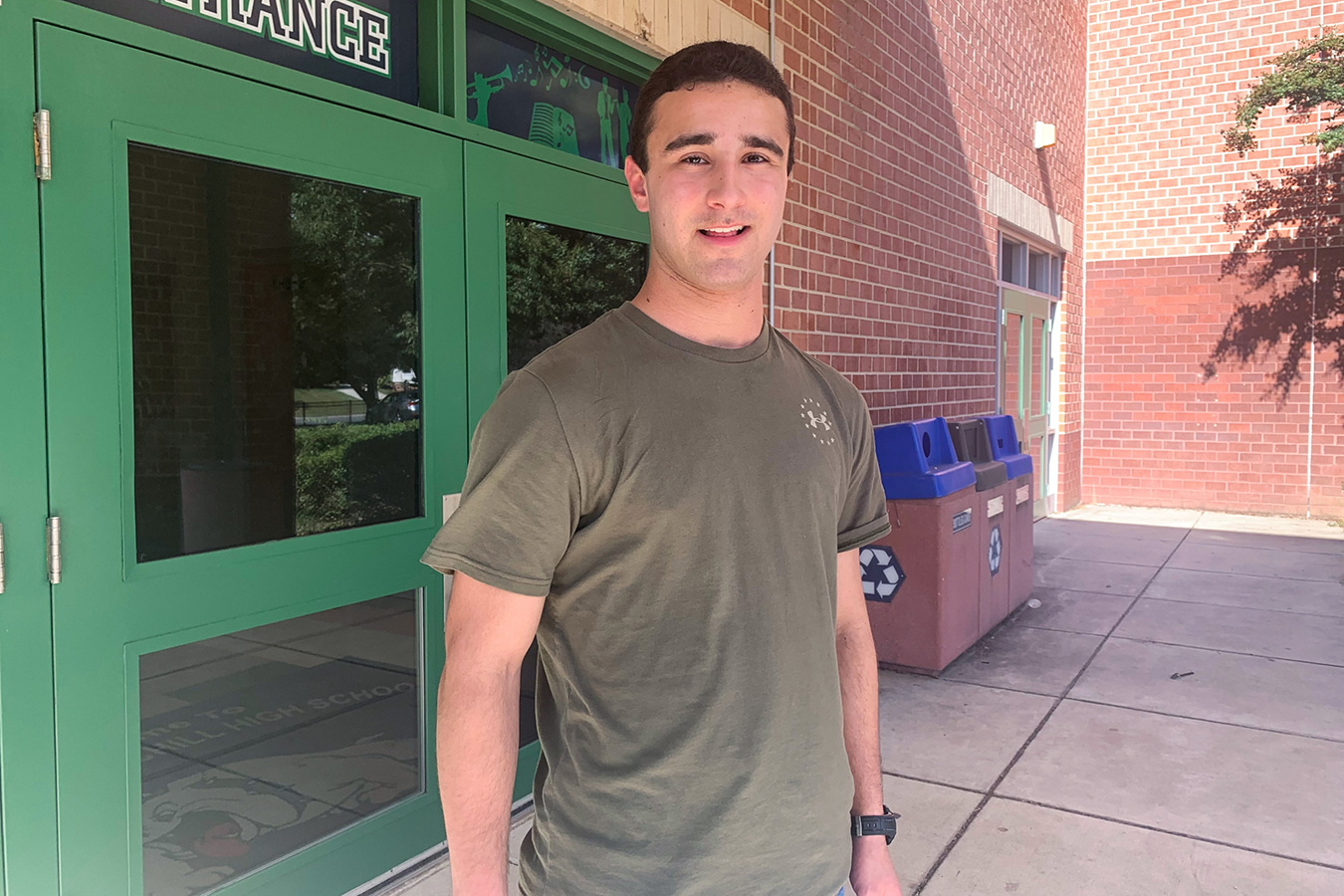When Will tried his first vape during his sophomore year, he didn’t know what to expect. It was just something he had vaguely heard about at his high school.
“I just sort of remember using it a bunch of times, like in a row,” he said. “And there’s this huge buzz-sensation-like head rush. And I just … didn’t really stop.”
Will kept vaping nicotine addictively for the next year and a half. He was part of a trend. Teens’ use of e-cigarettes has doubled since 2017, according to the National Institute on Drug Abuse, with 1 in 4 high school seniors reporting use of a vape in the previous month.
He’s now a senior at a high school in the suburbs of Washington, D.C. (NPR and Kaiser Health News are using Will’s first name only so he could speak freely about his use without fear of repercussions at school or home.)
Will overcame his addiction to nicotine before the outbreak this summer of severe lung illness and deaths linked to vaping. But he still occasionally vapes THC, the psychoactive ingredient in marijuana. He said the illnesses haven’t made him or his friends quit, partly because vaping is a big part of teen culture — and also because they think nothing bad will happen to them.
“I feel like, for a lot of people, that’s just a chance they’re willing to take,” he said. “I don’t think a lot of kids are thinking about the future.”
Last spring, three students at Winston Churchill High School in Potomac, Md., were taken via ambulance to emergency rooms in two separate incidents after vaping THC.
All three students had lost consciousness, however, the cases are not among those being investigated by the Centers for Disease Control and Prevention, said Mary Anderson, spokeswoman for Montgomery County Health and Human Services. The students hadn’t shown any respiratory symptoms, Anderson explained, and the incidents happened before the CDC issued guidance on reporting severe lung illnesses.
Churchill High School Principal Brandi Heckert said she’s seen vaping explode in popularity over the past year.
“All of a sudden, it went from zero to 60 — in, like, no time,” she said.
Teachers and staff have come a long way in being able to recognize the different kinds of vapes, Heckert said. Vapes can look like a flash drive or other digital device — so easy to conceal that students can sometimes use them in class.
“I think what’s scary for us a lot of times is that, unless they have some cartridge on them or package on them, we don’t know what’s in there,” Heckert said. “And so that makes it really challenging to help them if they’re in need.”
For example, she said, school officials last spring didn’t know exactly what the three students treated in the ER for serious vaping-related symptoms had ingested.
For teens who vape, an addiction to nicotine ramped up fast, too. Will recalled his out-of-control use.
“I just kept doing it,” he said. “I remember, especially when I got home, I just kept using my own — for, like, the entire night — until I sort of felt sick in my stomach.”
At first, Will and his friends got someone to buy the pods containing nicotine-infused liquid for them from a store. But eventually, Will said, he was able to buy his own pods online on eBay and other sites.
After a while, he no longer got the head rush that made vaping satisfying in the beginning. But he still kept buying nicotine.
Toward the end, the teen said, “it just seemed sort of meaningless, like just buying these $20 packets of, like, nicotine juice. It didn’t really seem like I was gaining much from it, and then over time, my lungs started to hurt.”
Will stopped vaping last spring almost by accident. A friend had jumped into a pool with Will’s Juul device, rendering it useless. He spent hours trying to fix it, but his efforts didn’t work. Another Juul device to replace it would have cost him about $50.
“It didn’t really seem like it was something that was really worth it to me. And I knew I was trying to definitely be more proactive and healthy,” he said.
So he stopped vaping — cold turkey — and felt a severe craving for three weeks straight.
“I can see why it would be so hard for other people to stop,” he said.
Will believes that for some people, including him, vaping is a phase. But others are truly addicted, he said.

Louis Schreiber, a senior at Winston Churchill High School, in the Maryland suburbs of Washington, D.C., is working on starting an anti-vaping group at the school. He has asthma and says he hopes the rash of serious vaping-related lung diseases among teens will serve as a wake-up call to other students.(Elly Yu/WAMU)
Louis Schreiber, a senior at Churchill High School, doesn’t vape himself and is trying to start an anti-vaping group among his classmates. He has asthma and said he avoids the bathrooms at school because of vaping.
He’s part of a task force on vaping in Montgomery County and said he hopes the string of recent illnesses have served as “a wake-up call” for some of his peers. But he agreed the national wave of lung illnesses won’t stop many from vaping.
Right now, Schreiber said, the use of e-cigarettes “is viewed as a cool, popular thing” among his peers. “To stick out in high school for any reason, certainly, among this generation, is hard,” he said. “And going against this would be almost, you know, impossible.”
Nonetheless, Phoebe Chambers, a junior at Churchill, said the hospitalizations that have been in the news have scared some of her classmates.
“People who have never vaped probably don’t want to try it now. But kids who are addicted — I think they are struggling,” Chambers said.
“I have one friend who quit because they realized how bad it was, and it was very, very hard for them,” she said. Chambers is concerned about how vaping will affect the health of her generation. Even if a teen does try to stop using vapes, the devices are hard to avoid.
“It’s not just something that’s limited to one social group,” Chambers said. “It’s not just like the group of kids who, like, are stoners. It’s the athletes. It’s the nerds. It’s everybody. It’s infiltrated every social clique. Every type of person knows someone — or maybe they are that person — who is vaping.”
This story is part of a partnership that includes WAMU, NPR and Kaiser Health News.







